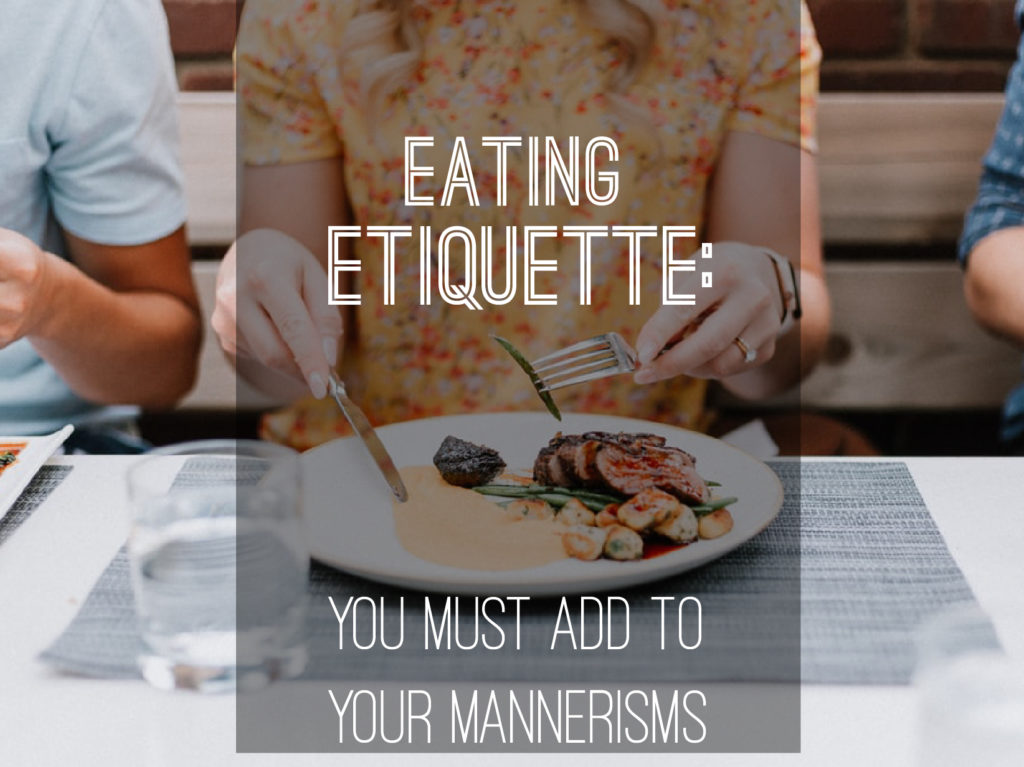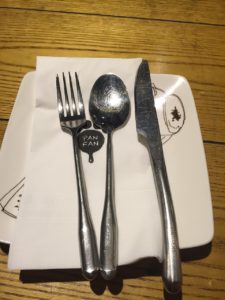Whether you feel it necessary, or it seems intangible, it doesn’t matter. Eating etiquettes, today or tomorrow, some way or the other, will determine your manners, or at least impact the others surrounding you, at a certain place. Call it a bane of the dawn of civilization, eating etiquettes might seem like an unnecessarily big deal. You might wonder, “I don’t eat like a bear or a pig!” But what matters is are you following the standard procedures? Even if you proclaim yourself to be a person with agreeable etiquettes, you might still polish them further, or at all, take one or two new table skills you didn’t know. Here, give it a reading.

Why Learning Eating Etiquettes are Important?
You never know when you’ll end up in a business meeting or that of a client and where you have to sit for a meal together. Eating etiquettes come handy at surprising times and that is way better to keep the skills by heart than to get awkward amidst all. There are a lot of little does and don’ts that you might need to keep in mind if you’re attending a formal or even an informal meal.
Let us start from leaning the napkin handling etiquettes and gradually move to the other situations that you might find yourself in, while at dining.
Napkin Etiquettes

- If you’re attending a formal meal, do not use the napkin before the hostess of the meal was removed and used it.
- If you’re attending an informal meal, you might take the napkin and unfold it on your lap, immediately after settling.
- If you’re leaving your seat for any purpose, temporarily, you might rise and let the napkin lie on the chair. While leaving the table finally, fold the napkin and put it at the left of your setting.
- Do not use the napkin as a tissue. It is only meant for dabbing the sides of your mouth.
- If you need to wipe or blow your nose or anything else, leave the table and excuse for bathroom.
Cutlery and utensil etiquettes; eating
- Always wait for the host to start eating.
- At small tables with two to four people, wait until everybody is served before eating.
- In the case of the formal business meal, you might start eating only after everybody is served or after the hostess has requested to begin.
- While using a fork, hold it in your left hand, keeping the tines downward.
- Grip the knife in your right hand, with your index finger extended along the top of the blade of the knife.
- To lift the food to your mouth, use the fork as a spear.
- When you’re not eating, you might rest your hand on your lap or the table with your wrists. Elbow shouldn’t tough the table.
- If your mouth is full, try not to talk at any cost. You might speak if the food is less in your mouth. It looks polite.
- If you’re having a soup that is too hot, do not blow. Instead, wait until it gets cool.
- Don’t slurp liquid from a spoon. Sip it from the sides, soundlessly.
- Do not order alcohol. Nobody likes a person asking for too much alcohol.
- Do not smoke at the table.
Passing the items etiquettes
- You must always pass to the right if the item is generically passed and not aimed at a specific person.
- If the item you’re passing is too heavy to hold for long, you might put it to rest on the table and then pass.
- If the dish is light enough, it is polite to hold it until the other guest takes the content.
- If the above step is awkward or not possible, you might just pass to the next person, who’ll serve himself or herself.
- Do not touch the content with your fingers, at any cost. Use spoons or tongs provided.
- Always pass the salt and pepper together.
Ending the meals
- Once the meal is finished, you might rest your knife and fork on the plate, specifically to gesture you’re done. Or you can put them in a way to show a pause in your meal.
- To show a pause- keep the knife and the fork in a v-shaped position, with the tips touching each other in the middle of the plate.
- To gesture that you’re done with- put the fork and the knife on the plate, parallelly, in a slightly slanting way. It should look like a clock striking 5:50. Or the handles should be in a four o’clock position with the tips out of the rim.
- If it is a formal meal, wait for the staff to clear the dishes.
- If the meal is informal, the hostess will clear the dishes with the help of one or two guests.
- Make it a point not to complain about the food, even if you didn’t like it or whatsoever. It appears rude and negative.
Here is the buddle kit for everyone who is looking forward to nurturing their eating etiquettes or adding a few new ones to their list.
Learn for English speaking, Public speaking, Personality development classes to exploring yourself with everyone.
